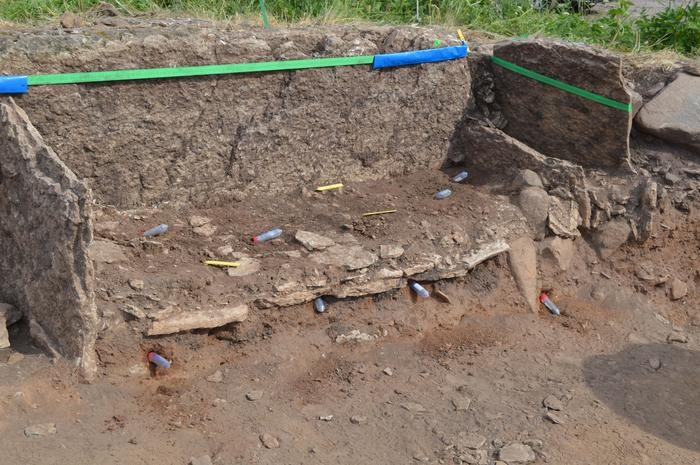Swedish archaeologists have uncovered a 5,500-year-old stone chamber containing several burials dated back around the Early Neolithic period.
However, the skulls and largest bones of at least 12 individuals that are contained therein have been plucked out of their remains, at roughly the same period as when they were all placed there.

What Happened to the Bones Within the Chamber?
Karl-Göran Sjögren, an archaeologist at Sweden's University of Gothenburg who wrote of the findings in a recent study, said in a statement to Eurekalert: "This differs from what we usually see in megalithic graves."
"Usually, the bones that are missing are smaller bones from feet and hands," he added.
Sjögren and his colleagues, who published the study in the Journal of Neolithic Archaeology last Dec. 22, suggest that the bones could have gone missing due to traditional reasons appropriate at the time, however, they are not sure.
The stone chamber itself was found inside a dolmen, a prehistoric tomb made out of large stones, within the village of Tiarp located in the country's Halland Region.
Thousands of other similar sites were found all across the world, most of which were discovered across Europe and some were pinpointed in areas within the Western Sahara and in Korea. That said, all sites roughly belong to the same Late Neolithic period, some 5,000 years ago.
In contrast, the researchers say the Tiarp Dolmen was built around 3,500 BC, which makes it one of the earliest burial sites of this type in Sweden. Older burial tombs have been uncovered within the country, with one dated up to 8,000 years old, as per Live Science.
Read Also : Egypt's Renovation That will Clad Giza's Smallest Pyramid in Granite Blocks Sparks Outrage Among Experts
What was Found Inside the Tiarp Dolmen?
All in all, archaeologists have uncovered the remains of 12 people within the stone burial chamber, which include rib and tooth fragments from both infants and the elderly.
Only a few skulls from the group of remains were found, alongside a scarce count of larger bones belonging to the thigh and arm.
Bearing the fact that the burial site remained untouched since the Stone Age, the researchers believe the missing bones have been displaced at the moment of their placement or directly afterward.
The archaeologists added that there had been no signs of violence found upon their inspection of the bones, however, they still don't have stronger pieces of evidence that could reveal how these people died.
"We haven't seen any injuries on the people buried, so we don't think violence is involved," Sjögren explained. "But we are continuing to study their DNA and that will show whether they had any diseases."
Sjögren added that through the team's inspection of the remains' well-preserved DNA samples, they should also be able to find if the people found within the tomb were family members.